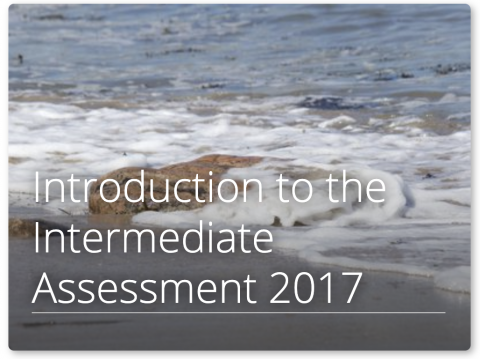What is assessed
Continuity of process
In preparing Scotland's Marine Assessment 2020, there has been a concerted effort to maintain and report on time series data and to make use of internationally recognised common indicators such as those developed as part of the periodic reporting by the OSPAR Commission and reported in the OSPAR Intermediate Assessment 2017.
At the scale of the UK, the common indicators are used. However, the deep waters to the west of Scotland and the fjordic sea lochs on the west coast of Scotland are unique in terms of UK marine waters. This means that there are aspects of this assessment very specific to Scotland. At the same time, there is requirement to report against the Scottish Marine Regions (SMRs) and associated Offshore Marine Regions (OMRs) where possible to facilitate regional planning assessments. Over time, time series will develop for these regions, but at present these are limited.
Common indicators have been developed as part of the OSPAR, Marine Strategy Framework Directive (MSFD) and UK Marine Strategy reporting. Some of these indicators are quite new and will develop with time, but at present, time series data and geographical coverage are limited for some indicators. A further challenge is natural environmental variability, for example muddy sediments which accumulate high concentrations of contaminants, whereas sandy sediments do not accumulate contaminants. The consequence of this is that where the nature of the seabed within a region is sandy or rocky, it will not be possible to undertake a hazardous substance assessment of the seabed; in such cases the assessments will be restricted to biota.
Where practicable, reference has been made to the previous assessment. However, with the development of new indicators since 2011, there will be instances where this is simply not possible.
SMA2020 is a wide ranging assessment and covers 183 components:
- 66 vision assessments
- 36 vision case studies
- 19 climate change assessments
- 12 ecosystem services assessments
- 21 pressures regional assessments
- 21 summary regional assessments
- 4 introduction chapters
- 4 managing the human activities that have an impact on Scotland's seas chapters
Climate change
The increasing concentration of greenhouse gases, including carbon dioxide, methane and nitrous oxide, in the Earth's atmosphere is having a significant impact on Earth systems, including the ocean. Changes are being observed globally, with very rapid changes in the ocean occurring in the Arctic. This assessment not only looks at the changes in the ocean climate of Scotland, but the biological impacts of climate change in the marine environment and the impacts on productivity. Of significant importance is that the changes taking place may present new opportunities around blue carbon (refers to the carbon captured by all biological metabolic process e.g. photosynthesis, calcification and organic material derived from other sources e.g. terrigenous that is subsequently deposited and stored as either organic or inorganic carbon in marine sediments) as well as the technological developments arising from carbon capture and storage (collecting for example carbon dioxide and injecting into the seabed) or indeed the further expansion of offshore energy generation from wind, wave or tidal energy. The key messages around the magnitude of the anticipated changes mean that action is required in the very short term to offset the impacts of, for example, sea level rise while the importance of improving ocean literacy across the population is now recognised as a key objective in facilitating the necessary cultural changes.
|
Theme
|
Assessment /Case Study
|
| Deep sea | |
Assessments reporting directly on the vision
Scotland's Marine Assessment 2020 comprises some 66 specific assessments and 36 associated case studies. These are spread across four Topics which cover Physical characteristics, Clean and safe, Healthy and biologically diverse and Productive.
Summary of assessments and case studies by Topic. For Healthy and biologically diverse, the assessments are presented separately for habitats, species and conservation.
|
Topic
|
Assessments
|
Case studies
|
|
Physical characteristics and ocean acidification
|
8
|
4 |
|
Clean and safe
|
23
|
8 |
|
Healthy and biologically diverse – Habitats
|
4
|
17 |
|
Healthy and biologically diverse – Species
|
11
|
|
|
Healthy and biologically diverse – Conservation
|
1
|
1
|
|
Productive
|
19
|
6 |
|
Total
|
66
|
36 |
Details of the individual assessments by Topic (Physical characteristics and ocean acidification, Clean and safe, Healthy and biologically diverse, Productive) are presented below. To assist with navigation, the Topics are divided into Themes, (e.g. Hazardous substances and their effects) with some Themes having Sub-Themes (e.g. Contaminants in sediments and biota). Assessments are accessible under the Themes or Sub-Theme. There were small number of assessments for Physical characteristics and ocean acidification compared to the other topics. Therefore there was no need to identify Themes or Sub-Themes; the Assessments are accessed directly from the Topic page.
The Topics for the assessments are presented in line with the Scottish vision of ‘clean, healthy, safe, productive, biologically diverse marine and coastal environments, managed to meet the long-term needs of nature and people’. Clean and safe have been taken together as have healthy and biologically diverse. A number of the assessments within the ‘Clean and safe’ Topic are based on internationally recognised assessment criteria which are coupled with internationally agreed objectives including the prevention of pollution by hazardous substances to achieve concentrations that do not give rise to adverse effects on human health or the marine environment. In a similar vein, the internationally agreed strategy for human-induced eutrophication is that it is ‘minimised, especially the adverse effects thereof, such as losses in biodiversity, ecosystem degradation, harmful algae blooms and oxygen deficiency in bottom waters’ (OSPAR, 2020). Such an approach also ties in directly with the UK Marine Strategy and the definition of Good Environmental Status (GES). Good environmental status is defined as ‘the environmental status of marine waters where these provide ecologically diverse and dynamic ocean and seas which are clean, healthy and productive within their intrinsic conditions, and the use of the marine environment is at a level that is sustainable, thus safeguarding the potential for uses and activities by current and future generations’ (Defra, 2019).
The 'Healthy and biologically diverse’ Topic has advanced considerably over the last 15 years as a result of both national and international (e.g. OSPAR Strategy for Biological Diversity and Ecosystems and EU Marine Strategy Directive, Good Environmental Status) developments. Driven by the Convention on Biological Diversity and Scotland’s Biodiversity there is an understanding of what is meant by biological diversity or biodiversity and why it is important. However, for the seas and ocean to be healthy, there is a requirement to go beyond biodiversity. A healthy ocean requires that the physical characteristics (temperature, oxygen concentrations, salinity, pH) although variable, fall within a recognised range for a given geographic location and are minimally impacted by human activities. In addition, a healthy ocean supports a diverse range of species and habitats, commensurate with the physical characteristics and hydrographic conditions, and which are at most only minimally impacted by human activities.
The Productive Topic details the economic benefits to Scotland from the perspectives of an overview of the Scottish Marine Economic Statistics. This Topic differs somewhat to the Clean and safe and Healthy and biologically diverse Topics in that there are not specific thresholds against which the data are assessed. Rather, the assessments detail the situation as it currently is understood as well as providing information on how the current situation compares to that of five years ago.
Topic: Physical characteristics and ocean acidification
The assessments in this section are:
|
Assessments
|
Assessments
|
| Dissolved oxygen (linked from Eutrophication) |
This Topic is supported by case studies on:
- Dissolved oxygen, application of novel technologies (linked from Eutrophication)
- Scotland’s tidal stream resource
- Coccolithophores at Stonehaven
- Cold-water corals Mingulay, carbonate chemistry diurnal variability
- Shell integrity of pelagic gastropods at Stonehaven

Equipment used to determine the total alkalinity (TA) and dissolved inorganic carbon (DIC) in seawater. These parameters are then used to calculate the pH, a measure of the hydrogen ion concentration in the seawater. The average pH of offshore waters is approximately 8.2, which is slightly alkaline. © Colin Moffat, Marine Scotland.
Topic: Clean and safe
The assessments in this Topic are:
|
Theme
|
Assessment
|
Theme
|
Assessment
|
|
Dissolved oxygen (also appears under Physical characteristics and ocean acidification)
|
|||
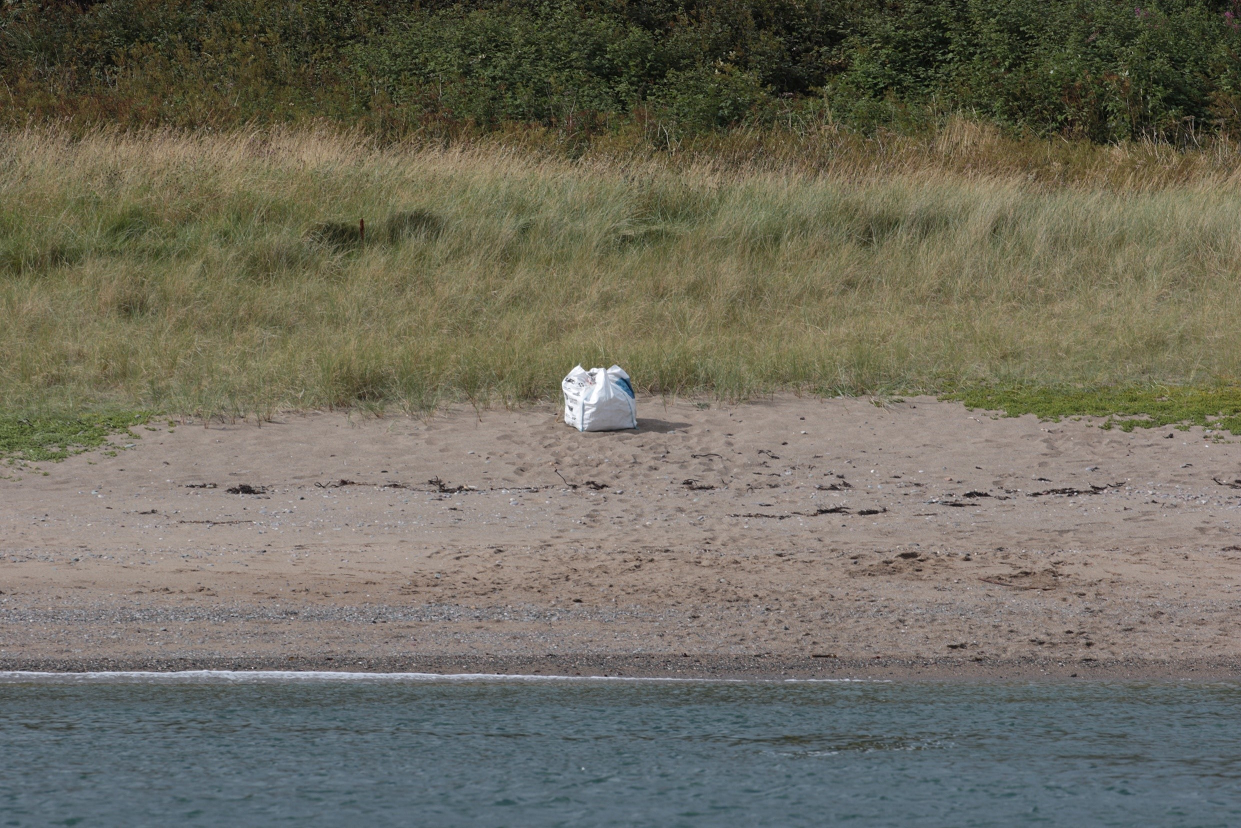
A bag of beach litter on a remote beach, packaged and ready for collection. The beach was accessed from the sea. © Colin Moffat, Marine Scotland.
|
Theme
|
Sub-Theme
|
Assessment
|
|
|
||
|
|
This Topic is supported by case studies:
Theme: Hazardous substances and effects
- PCBs in grey seals (also appears under Mammals)
- PBDEs in grey seals (also appears under Mammals)
- Imposex in Sullom Voe
- Maritime casualties investigated by Marine Accident Investigation Branch
Theme: Eutrophication
- Dissolved oxygen, application of novel technologies (also appears under Physical characteristics and ocean acidification)
- Opportunistic macroalgal blooms (Ythan estuary)
Theme: Marine litter
- Microplastics in Scottish intertidal sediments – a first baseline (2014-2018)
- The RealRiskNano project
Topic: Healthy and biologically diverse
The assessments in this Topic are:
|
Theme
|
Sub-Theme
|
Assessment
|
|
|
||
|
|
|
|
| Predicted extent of physical disturbance to seafloor | ||
|
|
This Topic is supported by case studies:
Theme: Habitats
- Biogenic habitat enhancement
- Blue carbon in Scottish maerl beds
- Blue carbon in Scottish marine sedimentary environments
- Blue carbon, the contribution from seaweed detritus
- Intertidal rock
- Protecting the Loch Carron flame shell beds (also appears under Conservation)
- Persistent damage to the Loch Creran serpulid reefs (also appears under Conservation)
- Seabed habitats in territorial waters - the evolving knowledge-base
- Deep sea vulnerable marine ecosystems
- Marine food webs
Theme: Species
- Scottish Marine Animal Stranding Scheme
- Native Oysters
- Basking sharks in Scottish waters
- Flapper skate – Loch Sunart to the Sound of Jura MPA
- Sandeels in Scottish waters
- Carpet sea squirt
- Marine non-native species monitoring in the Orkney Islands
- PCBs in grey seals (linked from Contaminants in sediment and biota)
- PBDEs in grey seals (linked from Contaminants in sediment and biota)
Theme: Conservation
- Flapper skate – Loch Sunart to the Sound of Jura MPA
- Protecting the Loch Carron flame shell beds (linked from Intertidal and continental shelf)
- Persistent damage to the Loch Creran serpulid reefs (linked from Intertidal and continental shelf)
- Socio-economic impacts of marine protected areas (linked from Productive))
- Priority Marine Features
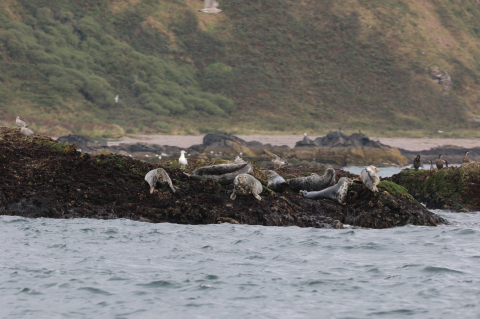
Grey seals (Halichoerus grypus) on a rocky promontory near Stonehaven, North-East Scotland, one of the species assessed in Scotland's Marine Assessment 2020. © Colin Moffat, Marine Scotland.
Topic: Productive
The assessments in this Topic are:
|
Theme
|
Assessment
|
|
|
|
|
|
|
| Oil and gas sector and infrastructure | |
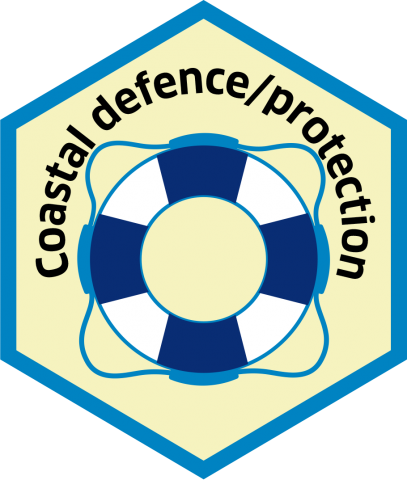 |
|
 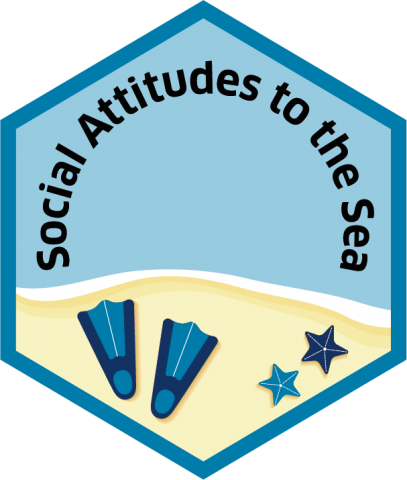 |
Marine tourism |
This Topic is supported by case studies:
- Scotland's coastal town typology
- Socio-economic impacts of Marine Protected Areas (also appears under Marine Protected Areas)
- Overview of the marine economy
Theme: Transport, communication, defence and waste
Theme: Recreation and cultural heritage
Theme: Energy and mineral resources
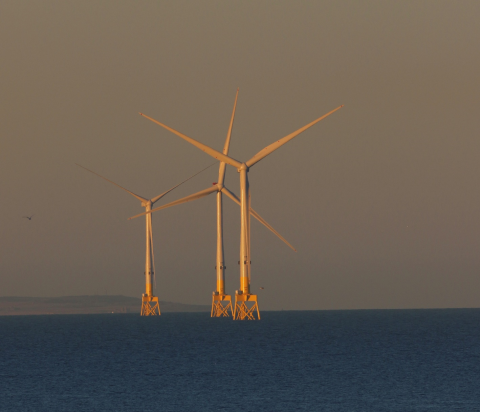
Scotland has significant wind resources, some of which drive the turbines in Aberdeen Bay.
Sections covering a specific subject
Pressures from activities
The Marine (Scotland) Act 2010, details the requirement for Scottish Ministers to prepare a summary of significant pressures and the impact of human activity on the area or region. This was a very specific activity for which a particular process was put in place. This is presented in more detail in the Pressures from activities section. However, at this stage it is worth introducing the sensitivity tool used during this exercise.
The pressure(s) associated with each activity were identified using the Feature Activity Sensitivity Tool (FeAST). This sensitivity tool has been developed jointly by NatureScot, the Joint Nature Conservation Committee and Marine Scotland. Based on an OSPAR agreed list of marine pressures which can be used to help assessments of human activities in the marine environment, the marine pressure list has been adapted for use in Scotland via work on the FeAST. Historic Environment & Cultural Heritage activities (represented by FeAST’s tourism and recreation activity), can be associated with 11 marine pressures. An updated version of the marine pressure list was created during 2019 as part of ongoing redevelopment of FeAST and for use as a snap shot in Scotland’s Marine Assessment 2020 (SMA2020). This is an online tool that allows users to understand how pressures are associated with marine activities as well as providing a detailed description of the pressure(s). FeAST has been used in support of several aspects of SMA2020. This means that a standardised lists of marine pressures and activities, those within FeAST, have been used to in the assessments and the presentation of information.
FeAST uses a defined list of 48 activities split into 15 activity categories which are:
- Aquaculture
- Beach replenishment
- Bioprospecting
- Energy production & associated infrastructure
- Extraction
- Fishing
- Industrial & agricultural liquid discharges
- Infrastructure
- Military activities
- Seaweed harvesting
- Seismic survey
- Sewerage disposal
- Shipping
- Tourism & recreation
- Waste disposal
These categories are split further where specific activities are likely to cause different impacts on marine features e.g. Infrastructure covers five specific activities and fishing has 16. In total there are forty eight activities. It should be noted that the extent and impact of each pressure from a given activity will vary according to its intensity or frequency. The extent and impact of the pressure will also vary depending on the sensitivity of the habitat or species on which it is acting. The existence of multiple activities, and potentially multiple pressures, at specific locations will result in a cumulative impact on the environment. For further up to date information visit the FeAST webpage.
Regional Assessments
In the future, there will be a requirement to report more specifically at the scale of the Scottish Marine Regions (SMRs). Regional assessments were presented in Scotland's Marine Atlas 2011. However, in Scotland's Marine Assessment 2020 there has been an attempt to report, where practicable, on the basis of the SMRs and the Offshore Marine Regions (OMRs). Two of the Marine Planning Partnerships have published assessments. The Clyde Marine Planning Partnership published its Clyde Marine Region Assessment in 2017. The Shetland Marine Planning Partnership published Shetland Islands Marine Region State of the Environment Assessment in 2019. In September 2020 a consultation was held on a state-of-the-seas appraisal of the waters around Orkney as a third Marine Planning Partnership develops, this time for Orkney. However, the scale of the SMRs does mean that reporting at that level may not be applicable to a species. As outlined in the section 'Assessment Processes and Methods', there are a range of 'areas' used for reporting. Where possible, comments on the relevance of the assessment to the SMRs has been made.
Natural capital, ecosystem services and the Blue Economy
There is increasing recognition that working with nature and realising the benefits of the natural world is an approach on which there needs to be a greater focus (Nutsford et al., 2016; Houlden et al., 2018; Nesshöver et al., 2017). Although this section has a ffocus on ‘Ecosystem Services’ there has been a development over a number of years around the terms and language which describe the benefits to humans of what nature provides. The overarching concept is that of ‘natural capital’ which has been defined as:
The world’s stocks of natural assets which include geology, soil, air, water and all living things (World Forum on Natural Capital)
Natural capital encompasses the habitats and ecosystems that provide social, environmental and economic benefits to humans. Some definitions may specifically include interactions and processes that form natural systems. Ultimately, natural capital provides a common framework to bring together economic and social evidence and analysis for a particular subject or place. Invoking the idea of natural capital in decision making should ensure that the value of the natural environment is given equal consideration. This has come about due to the realisation that if you draw down on a natural capital asset e.g. fish, then it is not without consequence. As detailed in the recently published guidance from the UK Department for Environment, Food and Rural Affairs:
Natural capital as a concept has gained traction and permanence because it offers a balanced focus on natural assets in ecological terms (their quantity, condition and sustainability) and the social and economic benefits that derive from those assets (Defra, 2020)
Building on the earlier example, fish is something that people eat, enjoy and benefit from. When fish is caught for consumption the benefit to society of those services can be valued by estimating the profit to the fishermen of bringing the fish into the market (Scottish Government, 2019). This does, of course, represent only one aside of the equation. There are ‘costs’ associated with any human activity. Continuing with the example of fishing, carbon emissions from fishing vessels should be part of the calculations. However, it is the very fact that there is a need to balance up the full costs of any human activity that greater consideration is now being given to the ideas of natural capital and the blue economy.
The Blue Economy is the sustainable use of ocean resources for economic growth, improved livelihoods and jobs, and ocean ecosystem health. (World Bank, 2017).
The Scottish Government is currently developing a ‘Blue Economy Action Plan’ with the objective that it will play a key role in Scotland’s recovery, resilience building and preparations for life outside of the European Union. Scotland already has a wide range of support, regulation and mechanisms in place to enable and manage the Blue Economy, albeit mostly by individual sectors. However, the refresh of the National Marine Plan will be an opportunity to review the regulation of human activities impacting on marine ecosystems. The Natural capital, ecosystem services and the Blue Economy section includes assessments on:
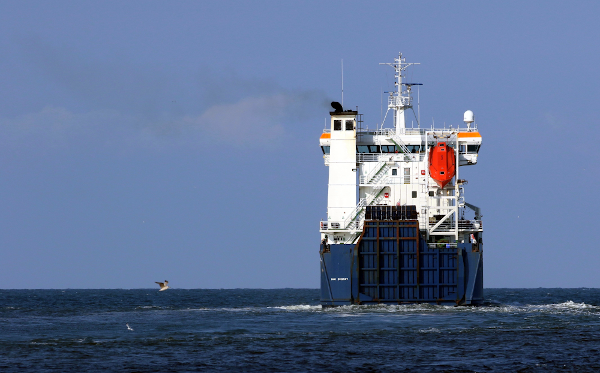
Shipping activity results in underwater noise for which there is a ‘Pressure Description’ in FeAST
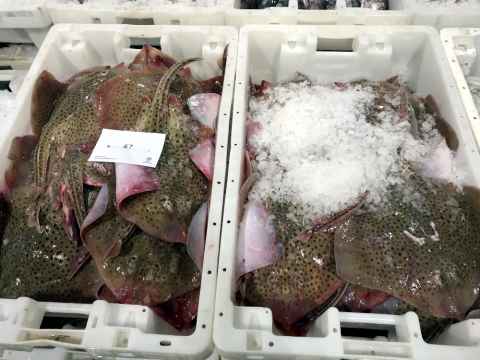
Fish on the market at Peterhead, Scotland.
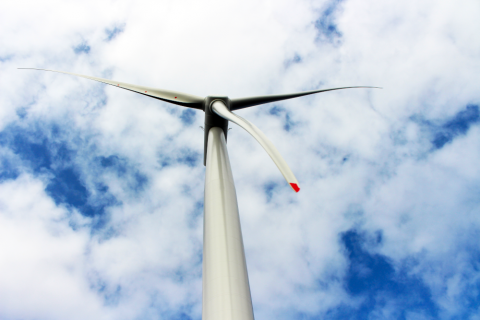
A wind turbine, part of Scotland’s sustainable development of offshore renewable energy.
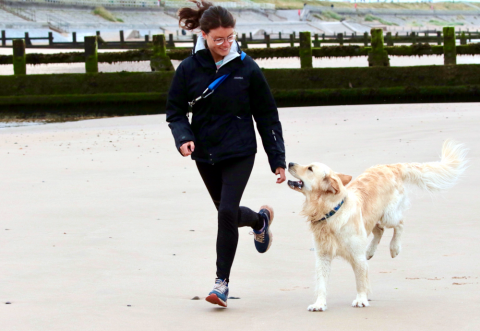
The well-being associated with visiting the coast is now widely recognised.
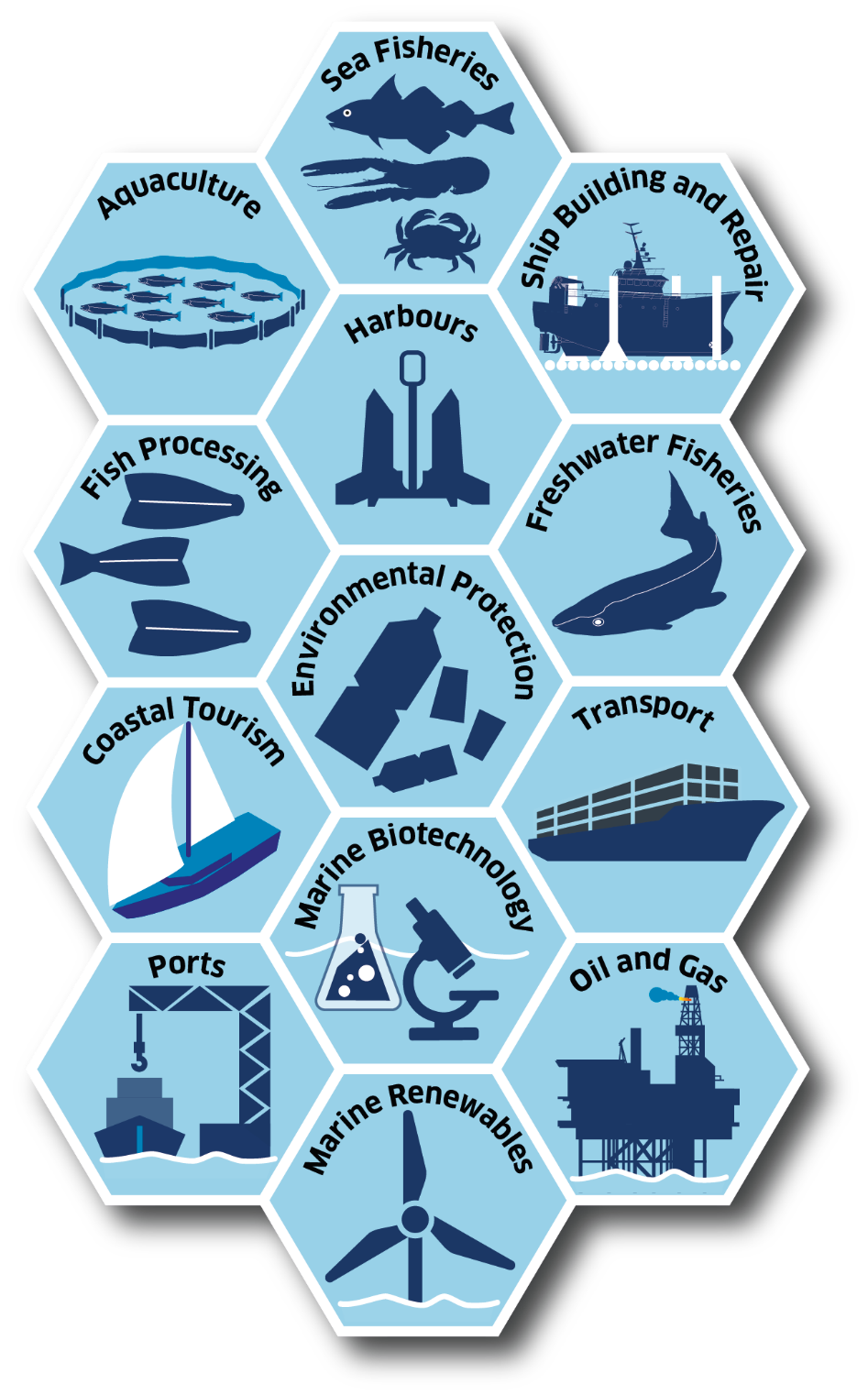
Components of the Blue Economy include energy, ports, fisheries, ship building, transport and coastal tourism.
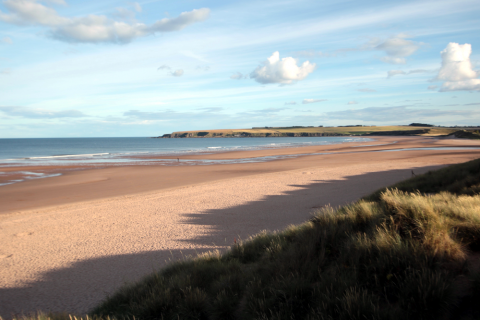
Lunan Bay, on the east of Scotland. A vast, sandy beach which is a haven for wildlife and enjoyed by the people who walk its length.
| Scotland's Marine Protected Area (MPA) Network | |
| Coasts and seas for human health | |
| Social attitudes to the sea | Social attitudes to the sea |
The definition of ecosystem services detailed in the sections titled ‘Natural capital, ecosystem services and Blue Economy’ is:
The functions and resources of nature that lead to benefits for people
Whether this is cultural (e.g. creativity and art, well-being), provisioning (energy, fishing), supporting (e.g. nutrient cycling, water cycling) or regulating (e.g. stabilising sediments, storm protection), the ecosystem services provided by marine systems are many and significant. These services arise from the planet’s natural capital.
The health of the marine area is not only important for Scotland’s wildlife and natural habitats, but also for the many benefits that people gain from the seas: locally, nationally and more broadly. The viability of many marine and coastal businesses, from fishing to aquaculture and tourism, are inextricably tied to the condition of fish populations, the integrity of the seabed and the conservation of species, habitats and physical processes. Less obvious in people’s day-to-day lives are benefits such as the production of oxygen, the incorporation and storage of carbon, the protection of vulnerable shores, the discovery of anti-cancer drugs and the cycling of nutrients and waste. The contribution of healthy seas to personal physical and mental well-being should also not be underestimated. To continue receiving these and other free benefits from Scotland’s seas the human impacts must be within nature’s capacity to provide them. To salvage benefits that have waned, or to safeguard those that appear vulnerable, active restoration or recovery of the features that underpin those benefits might be necessary.

As detailed earlier, SMA2020 includes a substantial section on ‘Productive’, the range of human economic activity taking place in the seas. The assessments consider both the contribution to the economy and provide examples of socio-economic effects across four themes:
- Energy and mineral resources
- Recreation and cultural heritage
- Living resources
- Transport, communication, defence and waste
The key point from this is that throughout SMA2020 there are considerations to the benefits to humans from the functions and resources of the ocean, which includes the abiotic (non-biological) as well as the biotic (biological).
The realisation of both the rate of change and the magnitude (geographically the whole of Earth) of the impacts from the alterations in the climate resulting from an increase in the concentrations of greenhouse gases (primarily, carbon dioxide, methane, nitrous oxide and fluorinated hydrocarbons) in the atmosphere has forced human kind to consider solutions that work with nature. Whether this involves the restoration of habitats that provide coastal protection or undertaking actions to improve local biodiversity, nature-based solutions need to become mainstream. This will require a common language and framework as well as ensuring that the solutions are credible. In 2016 the International Union for the Conservation of Nature (IUCN) members adopted a resolution (WCC-2016-Res-069) which, for the first time, defined the use of nature for the simultaneous benefit to biodiversity and for human:
“… actions to protect, sustainably manage and restore natural or modified ecosystems that address societal challenges effectively and adaptively, simultaneously providing human well-being and biodiversity benefits”. (IUCN, 2016)
Working with nature, developing solutions to achieve the UN Sustainable Development Goals and delivering seas around Scotland that are clean, safe, healthy, productive and biologically diverse, requires that the human activities which impact on these seas are indeed managed for both people and nature.

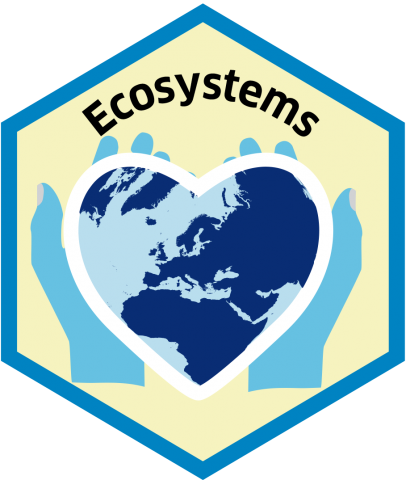
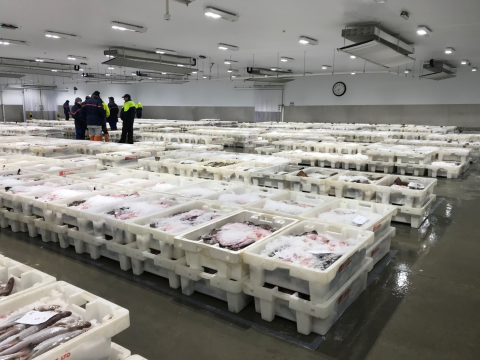
Fish on sale at Peterhead Fish market. The viability of fishing and the associated provision of a source of high quality protein is inextricably tied to the condition of fish populations.
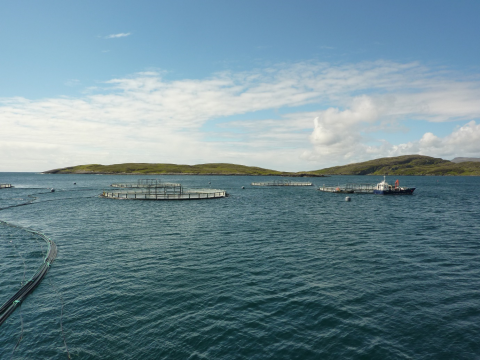
Atlantic salmon aquaculture is an important industry for Scotland including the Western Isles.

The marine environment is a huge fascination for people who enjoy an opportunity to find out what is in the sea close to where they live as here at a Marine Scotland open day at Stonehaven harbour.
Literature
|
, 2018. The relationship between greenspace and the mental wellbeing of adults: A systematic review. PLoS ONE, 13(9), p.e0203000 - . Available at: https://journals.plos.org/plosone/article?id=10.1371/journal.pone.0203000. |
|
, 2017. The science, policy and practice of nature-based solutions: An interdisciplinary perspective. Science of The Total Environment, 579, pp.1215 - 1227. Available at: http://www.sciencedirect.com/science/article/pii/S0048969716325578. |
|
, 2019. Scottish natural capital: ecosystem service accounts 2019, Office of National Statistics (ONS). Available at: https://www.gov.scot/publications/scottish-natural-capital-ecosystem-service-accounts-2019/. |


